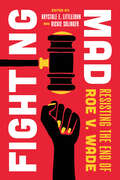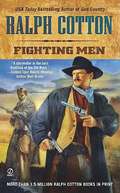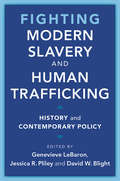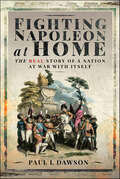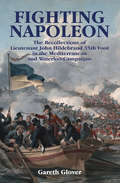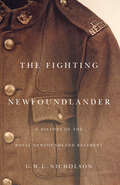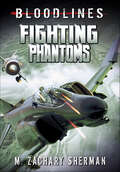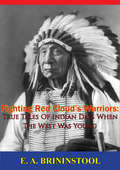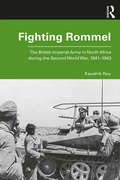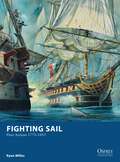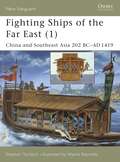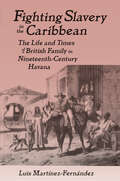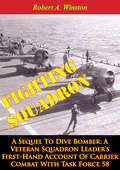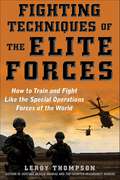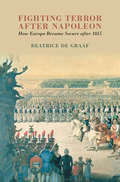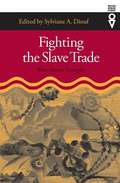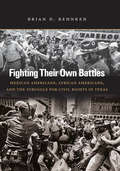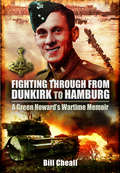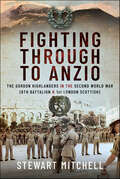- Table View
- List View
Fighting Mad: One Man's Guerrilla War
by Michael CalvertMichael Calvert was one of the legendary figures of the Second World War. He hit the headlines as 'Mad Mike' after the first Chindit campaign in 1943, with a reputation as a tough and daring leader of guerrilla troops. He was one of the first men selected for the Chindits by the controversial General Orde Wingate. He became Wingate's right-hand man - both in fierce jungle fighting and in battles against stick-in-the-mud staff officers. His speciality was penetrating behind enemy lines. Mad Mike fought in the snow and ice of Norway, in the steaming jungles of Burma, and on the battlefields of Europe where in 1945 he commanded the crack Special Air Service Brigade.
Fighting Mad: Resisting the End of Roe v. Wade (Reproductive Justice: A New Vision for the 21st Century #8)
by Krystale E. Littlejohn and Rickie SolingerA fierce and galvanizing reminder that resistance is everywhere in the fight for abortion and reproductive justice in the United States. Fighting Mad is a book about what "reproductive justice" means and what it looks like to fight for it. Editors Krystale E. Littlejohn and Rickie Solinger bring together many of the strongest, most resistant voices in the country to describe the impacts of the Supreme Court's Dobbs decision on abortion access and care. The essayists and change agents gathered in Fighting Mad represent a remarkable breadth of expertise: activists and artists, academics and abortion storytellers, health care professionals and legislators, clinic directors and lawyers, and so many more. They discuss abortion restrictions and strategies to provide care, the impacts of criminalization, efforts to protect the targeted, shortcomings of the past, and visions for the next generation. Fighting Mad captures for the social and historical record the vigorous resistance happening in the early post-Roe moment to show that there are millions on the ground fighting to secure a better future.
Fighting Men
by Ralph CottonCivil War veteran and former schoolmaster Sherman Dahl rides the Southwest as a gun for hire. Known by both the law and the lawless as "The Teacher", Dahl sells his services to those seeking justice-and is relentless in his pursuit of wanted men. .
Fighting Modern Slavery and Human Trafficking: History and Contemporary Policy (Slaveries since Emancipation)
by David W. Blight Jessica R. Pliley Genevieve LeBaronOver the last two decades, fighting modern slavery and human trafficking has become a cause célèbre. Yet large numbers of researchers, non-governmental organizations, trade unions, workers, and others who would seem like natural allies in the fight against modern slavery and trafficking are hugely skeptical of these movements. They object to how the problems are framed, and are skeptical of the “new abolitionist” movement. Why? This book tackles key controversies surrounding the anti-slavery and anti-trafficking movements head on. Champions and skeptics explore the fissures and fault lines that surround efforts to fight modern slavery and human trafficking today. These include: whether efforts to fight modern slavery displace or crowd out support for labor and migrant rights; whether and to what extent efforts to fight modern slavery mask, naturalize, and distract from racial, gendered, and economic inequality; and whether contemporary anti-slavery and anti-trafficking crusaders' use of history are accurate and appropriate.
Fighting Napoleon at Home: The Real Story of a Nation at War With Itself
by Paul L. DawsonFrom the sun-baked sierras of Spain, through the stormy waters off Cape Trafalgar to the muddy and bloody fields of Waterloo, Britain’s soldiers and sailors were notching up victories which set the country on the path to becoming the greatest power on the planet. We like to imagine the country was unified against a common enemy, France, and the Tyrant of Europe – Napoleon. Yet if we scratch the surface, we find a nation not just at war with France but with itself. The great successes of Wellington and Nelson, and the glamour of Regency London, cover over the cracks of a divided society, of riots across the industrial north and widespread political opposition. Huge swathes of the country hated the war, booed and hissed at soldiers and ‘lobbed turds’ at the Scots Greys in Halifax. There were repeated ‘Peace Petitions’ which sought to stop the war – and even to prevent the British Army fighting at Waterloo. Armed Associations of gentlemen volunteers and Local Militias led the call to close down the debate on social and democratic reform, while on the other hand thousands of English reformers heeded the call from France and hundreds actually headed to France, with many thousands more believing that the time had come, when its young men were needed to fight for King and Country, for reform. The burgeoning middle class had no vote in parliament; rapidly expanding industrial towns and cities had no MPs, yet small villages – pocket boroughs – often had two. The burden of taxation fell on those least able to afford it; enclosure of common land; corn laws; restrictions on the freedom of expression; the endless killing, all fed into an undercurrent of political dissent that was ideologically opposed to the loyalist cause. It was a battle for the very sole of Britain. For the first time, the shocking reality of life in Britain, during what is often portrayed as being its greatest era, is told through diaries, letters, and newspaper comments. Fighting Napoleon at Home is a startling portrayal of the society from which the soldiers and sailors were drawn and exactly what it was they were fighting to defend. It will become essential reading for anyone attempting to understand why Britain’s aristocracy had to stop Napoleon at any cost and suppress the dangerous ideals of liberté, égalité, fraternité.
Fighting Napoleon: The Recollections of Lieutenant John Hildebrand 35th Foot in the Mediterranean and Waterloo Campaigns
by Gareth Glover&“These lively and entertaining memoirs provide an intriguing counterpoint to Wellington&’s better-known operations in the Iberian Peninsula&” (Julian Stockwin, author of the Thomas Kydd series). It is often forgotten that Britain&’s struggle against Napoleon ranged across the continents, and the extensive operations of the Royal Navy and the British Army in the Mediterranean were key battlegrounds in this prolonged war of attrition. Even when Napoleon considered himself the master of Europe, he was unable to control the Mediterranean. Lt. John Hildebrand arrived in the Mediterranean as part of the garrison of Malta in 1810. He was then involved in the defense of the island of Sicily; the campaign to capture the Ionian Islands; the siege of Ragusa; and the Occupation of Corfu. With the war ending in 1814, John and his regiment returned home, only to be sent to Belgium when Napoleon escaped from Elba in 1815. The regiment was not involved at Waterloo, but was at Hal, where it guarded Wellington&’s flank during the battle. He then marched to Paris with the army. &“Napoleonic students will enjoy this refreshingly different slant on Napoleonic warfare.&” —Stuart Asquith, author of Stuart Asquith&’s Wargaming 18th Century Battles &“Essential reading for military historians and collectors of Napoleonic War era artifacts and militaria.&” —The Armourer Incorporating Classic Arms & Militaria
Fighting Nazi Occupation: British Resistance 1939–1945
by Malcolm Atkin&“Everyone knows about the Home Guard but what about the other Secret Intelligence Services (SIS and M16)? You can read about them in [this book].&” —This England When Winston Churchill made his &“we shall never surrender&” speech in 1940, he was speaking in the knowledge that Britain&’s Secret Intelligence Service was planning a civilian British resistance movement to mobilize after the country had been occupied. Britain&’s planning for clandestine warfare developed out of a fierce battle between the Secret Intelligence Service and the War Office for the control of guerrilla warfare and conflicting ideas over the legitimacy of armed civilians. A multi-layered system of secret organizations was the result. The Auxiliary Units are the best known of these &“ungentlemanly&” forces, but in this perceptive new study based on painstaking original research, Malcolm Atkin clearly demonstrates that they were never intended as a resistance organization. Instead, they were designed as a short-term guerrilla force, whilst their Special Duties Branch was designed to spy on the British public as much as any Nazi invader. Meanwhile, deep in the shadows, was the real resistance organization—Section VII of SIS. Malcolm Atkin&’s conclusions will cause controversy among military historians and will change our understanding of the preparations made in Britain to resist Nazi occupation in the Second World War. &“[A] detailed yet accessible historical study.&” —ProtoView
Fighting Newfoundlander
by Gerald W.L. NicholsonThe Fighting Newfoundlander is a vivid history of the Royal Newfoundland Regiment - the "Blue Puttees" - and its heroic contributions to the war effort. Gerald Nicholson details the harrowing experiences of the Newfoundland Regiment (the only Canadian unit) at Gallipoli and later at Beaumont Hamel where 710 of the 801 officers and men who took part in the assault were casualties. He also follows them to the Third Battle of Ypres and Cambrai, for which they were granted the title "Royal" - the only army unit to receive such a distinction during World War I.
Fighting Newfoundlander (Carleton Library Series)
by Gerald W.L. NicholsonThe Fighting Newfoundlander is a vivid history of the Royal Newfoundland Regiment - the "Blue Puttees" - and its heroic contributions to the war effort. Gerald Nicholson details the harrowing experiences of the Newfoundland Regiment (the only Canadian unit) at Gallipoli and later at Beaumont Hamel where 710 of the 801 officers and men who took part in the assault were casualties. He also follows them to the Third Battle of Ypres and Cambrai, for which they were granted the title "Royal" - the only army unit to receive such a distinction during World War I.
Fighting Phantoms (Bloodlines)
by M. Zachary ShermanIn late 1970, Lieutenant Verner "Hershey" Donovan sits aboard the USS Constellation aircraft carrier, waiting to fly his F-4 Phantom II over the skies of Vietnam. He's the lead roll for the next hop and eager to help the U.S. troops already on the ground. Then suddenly, the call comes in — a Marine Recon unit has taken heavy fire and requires air support. Within moments, Donvan and the other pilots are into their birds and into the skies. Soon, however, a dogfight with MiG fighter planes takes a turn for the worse, and the lieutenant ejects over enemy territory. His co-pilot is injured in the fall, and Donovan must make a difficult choice. In order to save his friend, he must first leave him behind.
Fighting Political Gridlock: How States Shape Our Nation and Our Lives
by David J. ToscanoIn this profoundly polarized era, the nation has been transfixed on the politics of Washington and its seemingly impenetrable gridlock. Many of the decisions that truly affect people’s lives, however, are being made not on the federal level but in the states. Faced with Washington’s political standoff, state governments are taking action on numerous vital issues, often impacting citizens and their communities far more than the decision makers in D.C. Despite this, few Americans really understand their state governments or the issues they address. In Fighting Political Gridlock, David Toscano reveals how the states are working around the impasse in Washington and how their work is increasingly shaping society.Long a central figure in one of the most important legislative bodies in the nation, the Virginia House of Delegates, Toscano brings a unique expertise to this urgent and timely discussion. Beginning with an analysis of state responses to COVID-19, including the processes and consequences of declaring states of emergency, he goes on to detail how various states are attacking issues in different ways–from education and voting to criminal justice and climate change–and provides a broad overview of how state actions affect our system of federalism. Toscano concludes with a call to action and civic engagement, including suggestions for how citizens and public officials can revitalize American democracy.
Fighting Red Cloud’s Warriors: True Tales Of Indian Days When The West Was Young
by E. A. BrininstoolTHE winning of the West was no child's play! It was war--war of the most brutal and inhuman type on the part of both Indians and whites. The Indian was fighting for his home, his commissary, his lands--lands ceded him through solemn treaty with the United States government--and what man, of any nation (if he is any sort of man) will not fight "for home and native land"?The white man fought to advance the cause of civilization, irrespective (in most instances) of the rights of the Indian, and without regard to his future existence. Civilization won--and to civilization's shame, it was at the cost of unnumbered thousands of lives and the shedding of much human blood of both whites and reds.I am not a believer in the old adage that "the only good Indian is a dead Indian." My sympathy is with the red man. The early white traders who trafficked with the Indian were, as a rule, a class of men of little conscience and few scruples, who would stoop to any deceit or trickery to rob the Indian of his furs and pelts. It was the early trader who introduced whiskey among the Indian tribes; who, through fraud and knavery, turned the red man against the whites of whatever class. This was the beginning of the hatred and contempt which made all white men, good or bad, soon look alike to the warring savage.In this volume of the "Frontier Series" I have written of a few of the most noted battles between the red man and the white man. As in the previous volume, no fiction is employed in these pages. Every incident related actually occurred, and is a part of the history of the old West. Some biographical sketches of noted frontier characters are included. The chapter on the destruction of the buffalo may well make the present-day sportsman pause and reflect.
Fighting Rommel: The British Imperial Army in North Africa during the Second World War, 1941–1943
by Kaushik RoyFighting Rommel examines how and why some armies innovate under pressure while others do not. Focusing on the learning culture of the British Imperial Forces, it looks at the Allied campaign during the Second World War against the Afrika Korps of Rommel. The volume highlights the hitherto unexplored yet key role of the British Indian Army, the largest volunteer force in the world. It also introduces ‘learning culture’ as a heuristic device. Further, it goes on to analyze military innovation on the battlefield, in victory and defeat. A major intervention in the study of the Second World War, this book will be indispensable to scholars and researchers of military history, especially British and German, battlefield history, and defence and strategic studies.
Fighting Sail - Fleet Actions 1775-1815
by Peter Dennis Ryan MillerIn the years between 1776 and 1815, grand square-rigged sailing ships dominated warfare on the high seas. Fighting Sail is a tabletop wargame of fleet battles in this age of canvas, cannon, and timbers. Players take on the roles of fleet admirals from one of eight different national fleets: America, Britain, France, Spain, The Netherlands, Portugal, Russia and Sweden in battles ranging from the American War of Independence to the Napoleonic Wars and the War of 1812. Each fleet has access to different ships, tactics, and command personalities - each with its own strengths and weaknesses. Offering a unique blend between detail and simplicity, the scenarios included enable the recreation of historic actions or 'what-if' scenarios. Join the battle and experience the adventurous age of the fighting sail!
Fighting Scholars: Habitus and Ethnographies of Martial Arts and Combat Sports (Key Issues In Modern Sociology Ser.)
by Dale C. Spencer Raul Sanchez GarciaFighting Scholars brings to the fore the ethnographic study of combat sports and martial arts as a means of exploring embodied human existence. The book's main claim is that such activities represent privileged grounds to access different social dimensions, such as emotion, violence, pain, gender, ethnicity and religion. To explore these dimensions, the concept of 'habitus' is presented prominently as an epistemic remedy for the academic distant gaze of the effaced academic body. The different contributions of this volume are aligned within the same project that began to crystallize in Loïc Wacquant's 'Body and Soul': the construction of a 'carnal sociology' that constitutes an exploration of the social world 'from' the body. The book is divided into three sections. In the first section, the editors introduce the field, providing a typology of existing literature. The second section contains the contributions of the authors, discussing their respective approaches to embodied ethnography, their use of the concept of 'habitus', and ethnographic findings. The third section contains a conclusion by the editors - reflecting on existing conceptions of 'habitus' and interdisciplinary possibilities for rethinking the concept - and an epilogue by Loïc Wacquant critically assessing the whole volume.
Fighting Ships of the Far East
by Stephen Turnbull Wayne ReynoldsFighting Ships of the Far East (1) adds enormously to the hitherto small corpus of knowledge about a fascinating and little known subject. Using detailed descriptions, accurate cutaway plates and reliable historical examples, this book covers the history of Chinese ship design and naval warfare from the beginning of the Han dynasty to the first few years of the Ming dynasty. The epic battle of Lake Poyang in in 1363, won by the man who was to become the first Ming Emperor, is also detailed.
Fighting Slavery in the Caribbean: Life and Times of a British Family in Nineteenth Century Havana
by Luis Martinez-FernandezThis volume presents a social history of life in mid-19th-century Cuba as experienced by George Backhouse (and his wife, Grace), who served on the British Havana Mixed Commission for the Suppression of the Slave Trade. Documented with extracts from the Backhouse's correspondence, diaries and other contemporary papers, Martinez-Fernandez paints a detailed picture of the Cuban slave trade, its role in the sugar industry, and the interrelated contradictions within Cuba's economy, society and politics. The Backhouse story provides addition al insights into important aspects of life in the "male" city of Havana, social antagonisms between Britons and North Americans, interactions with European social circles, religious tension, and the reality of tropical disease. Drama is added to the narrative in the author's description of the tragic and mysterious murder of George Backhouse in August 1855, possibly the result of a slave traders' conspiracy.
Fighting Squadron, A Sequel To Dive Bomber: A Veteran Squadron Leader’s First-Hand Account Of Carrier Combat With Task Force 58
by Lt.-Cmdr. Robert A. WinstonAn engaging memoir of Lieutenant-Commander Robert A. Winston's wartime experiences as squadron leader of Fighting Squadron 31, which succeeded in shooting down more enemy aircraft than any other squadron serving on light carriers then in action.Robert A. Winston was born in Washington, Indiana, in 1907 and graduated from Indiana University. He worked for The New York Times and The New York News for five years before starting flight training with the navy in 1935. He flew in fighting squadrons on both coasts and as an instructor at Pensacola, and he wrote about his initial aviation training in Dive Bomber, published in 1939 when Winston held the rank of lieutenant. In his second book, Aces Wild, he chronicled his experiences in Europe during 1939-40 as a test pilot accompanying a consignment of fighters destined for Finland. Back on active duty in the United States, he served as a flight instructor, then in the public relations office in Washington, D.C. After the attack on Pearl Harbor he was assigned to combat duty in the Pacific, which he recounts in Fighting Squadron, published in 1946 when Winston was a commander. At the end of the war he was serving on Admiral Nimitz's staff on Guam. From there he moved to Stockholm, where he served as the naval air attaché.
Fighting Techniques of the Elite Forces: How to Train and Fight Like the Special Operations Forces of the World
by Leroy ThompsonLearn the trade secrets of special operatives. It is easy to visualize special operations troops as men in camouflage with painted faces, lurking in the shadows of modern warfare. But the truth is far more complex—and enthralling. A wide array of skills, both physical and cerebral, combines to make up the modern elite soldier. Fighting Techniques of the Elite Forces not only shows the road down which the specialist must travel to reach his place as one of the world's fighting elite, it details the equipment he uses to carry out his missions and the actual techniques he employs. Themed chapters and a wealth of illustrations explain everything you need to know about the formidably trained warriors of the British and Australian SAS, US Army Rangers, Navy SEALs, the French GIGN, and more. Learn how to select a drop zone for parachute insertions or how to execute a High Altitude High Opening (HAHO) insertion when you are twenty miles' distance from your objective. Find out how combat swimmers launch from submarines to carry out beach reconnaissance prior to an invasion. Understand the special considerations and knowledge required to fight and, more importantly, survive in such hostile environments as jungle, desert, or mountain. Discover how today's special operative must master skills as diverse as horsemanship and the compact computer, or how to kill silently with a knife or laser designator.Fighting Techniques of the Elite Forces is a must-have for anyone interested in the covert world of elite forces; it will provide the key to understanding what makes the specialist soldier so very "special."
Fighting Terror after Napoleon: How Europe Became Secure after 1815
by Beatrice de GraafAfter twenty-six years of unprecedented revolutionary upheavals and endless fighting, the victorious powers craved stability after Napoleon's defeat in 1815. With the threat of war and revolutionary terror still looming large, the coalition launched an unprecedented experiment to re-establish European security. With over one million troops remaining in France, they established the Allied Council to mitigate the threat of war and terror and to design and consolidate a system of deterrence. The Council transformed the norm of interstate relations into the first, modern system of collective security in Europe. Drawing on the records of the Council and the correspondence of key figures such as Metternich, Castlereagh, Wellington and Alexander I, Beatrice de Graaf tells the story of Europe's transition from concluding a war to consolidating a new order. She reveals how, long before commercial interest and economic considerations on scale and productivity dictated and inspired the project of European integration, the common denominator behind this first impulse for a unification of Europe in norms and institutions was the collective fight against terror.
Fighting The Flying Circus [Illustrated Edition]
by Captain Eddie RickenbackerIncludes Aerial Warfare During World War I Illustrations Pack with 115 maps, plans, and photos.Captain Rickenbacker, originally from Ohio, was best known as one of the Commanders of the 94th "Hat-in-the-Ring" Squadron, a crack unit of pilots which included many former members of the famed Lafayette Escadrille. The 94th ended the war in France with the highest number of air victories of any American squadron. Captain Rickenbacker himself was credited with 26 aerial victories all within the last six months of the war, he was decorated with the Congressional Medal Of Honor for his inspirational leadership and fearless flying.
Fighting The Slave Trade: West African Strategies
by Sylviane A. DioufWhile most studies of the slave trade focus on the volume of captives and on their ethnic origins, the question of how the Africans organized their familial and communal lives to resist and assail it has not received adequate attention. But our picture of the slave trade is incomplete without an examination of the ways in which men and women responded to the threat and reality of enslavement and deportation. <P><P>Fighting the Slave Trade is the first book to explore in a systematic manner the strategies Africans used to protect and defend themselves and their communities from the onslaught of the Atlantic slave trade and how they assaulted it. <P>It challenges widely held myths of African passivity and general complicity in the trade and shows that resistance to enslavement and to involvement in the slave trade was much more pervasive than has been acknowledged by the orthodox interpretation of historical literature. <P>Focused on West Africa, the essays collected here examine in detail the defensive, protective, and offensive strategies of individuals, families, communities, and states. In chapters discussing the manipulation of the environment, resettlement, the redemption of captives, the transformation of social relations, political centralization, marronage, violent assaults on ships and ports, shipboard revolts, and controlled participation in the slave trade as a way to procure the means to attack it, Fighting the Slave Trade presents a much more complete picture of the West African slave trade than has previously been available.
Fighting Their Own Battles: Mexican Americans, African Americans, and the Struggle for Civil Rights in Texas
by Brian D. BehnkenBetween 1940 and 1975, Mexican Americans and African Americans in Texas fought a number of battles in court, at the ballot box, in schools, and on the streets to eliminate segregation and state-imposed racism. Although both groups engaged in civil rights struggles as victims of similar forms of racism and discrimination, they were rarely unified. In Fighting Their Own Battles, Brian Behnken explores the cultural dissimilarities, geographical distance, class tensions, and organizational differences that all worked to separate Mexican Americans and blacks. Behnken further demonstrates that prejudices on both sides undermined the potential for a united civil rights campaign. Coalition building and cooperative civil rights efforts foundered on the rocks of perceived difference, competition, distrust, and, oftentimes, outright racism. Behnken's in-depth study reveals the major issues of contention for the two groups, their different strategies to win rights, and significant thematic developments within the two civil rights struggles. By comparing the histories of these movements in one of the few states in the nation to witness two civil rights movements, Behnken bridges the fields of Mexican American and African American history, revealing the myriad causes that ultimately led these groups to "fight their own battles. "
Fighting Through from Dunkirk to Hamburg: A Green Howard's Wartime Memoir
by Bill CheallA British infantryman shares his harrowing story of life on the frontlines of WWII, from the North African Campaign to the invasion of Germany. In April 1939, when Bill Cheall joined the famous Yorkshire infantry regiment known as the Green Howards, he could not have imagined the drama, trauma, rewards and anguish that awaited him. But he recounts it all here, in this vivid memoir of service and courage under fire. As a Green Howard, Cheall was on the receiving end of the Nazis' Blitzkrieg and was evacuated exhausted. Then, courtesy of the Queen Mary, he shipped off to North Africa as part of Field Marshal Bernard Montgomery's Eight Army. After their victory in Tunisia, Cheall went on to the invasion of Sicily. The Green Howards then returned to England to be in the vanguard of the Normandy Landings on Gold Beach—where Cheall was wounded. Once he recovered, Cheall returned to the war zone and finished the war as a Regimental Policeman in occupied Germany. It is a remarkable story told with modesty, humor, and an eye for detail.
Fighting Through to Anzio: The Gordon Highlanders in the Second World War (6th Battalion & 1st London Scottish)
by Stewart MitchellThis is the inspiring story of two Gordon Highlanders Territorial Army battalions which saw action in some of the Second World War’s fiercest battles. After evacuation from Dunkirk, 6th Gordons fought in Tunisia in 1943, leading to the German surrender in North Africa. Following a spell in Iraq, the 1st London Scottish fought in Sicily and then the Battle of Monte Cassino where Private George Mitchell won his posthumous Victoria Cross, the most prestigious of the numerous gallantry awards to the men of both battalions. In January 1944, the 6th Gordons were the first British battalion ashore at Anzio. While the landing was unopposed, the Germans mounted devastating counter-attacks but, despite almost 400 killed, wounded and captured, the Battalion heroically held on. The 1st London Scottish arrived to fight alongside their Regimental ‘brethren’ suffering equally heavy devastating casualties. After the break-out, the Gordons pipe band led the liberation parade in Rome. Both battalions went on to fight up through Italy to smash the Gothic Line and eventual victory.

